Featured
Big Pharma’s Gaming of Medical Studies: How Science Is Twisted and Undermined

I love this image by Gina Tyler. It expresses the sadness of people afflicted by modern medicine and and the blindness behind that sadness. You can go to Gina's website at http://ginatyler.com
Science is held up as the purveyor of truth by doctors and pharmaceutical corporations. The claim that modern medicine is evidence based relies on the holy grail of science. I would personally like that to be true. Science, when unadulterated, is a search for truth. But what happens when the process is twisted and wrung through a profit-motivated wringer? That’s the reality in modern medical science. It’s a parody of the real thing.
The primary tool of medical science, termed the holy grail or the gold standard of medical research, is the randomized double-blind placebo-controlled experiment. It’s a fraud and has been from the initiation of the concept. We so often hear the claim, “It’s the gold standard!” It’s stated in a manner that brooks no question. We must accept the truth of that statement because … well, because. We are not supposed to ask the simple questions:
Who decided that randomized double-blind placebo-controlled trials are the gold standard?
Why? What makes it so good?
Why is it always the best? When did it become the best?
The simple fact is that those questions cannot be answered.
The gold standard of medical science, the randomized double-blind placebo-controlled trial has never been put to the test, which is itself a most unscientific fact. There is absolutely no science behind the claims of its superiority.
The randomized double-blind placebo-controlled trial (RDBPC trial) refers to a medical study that purports to select subjects by random, splits the trial into two groups, one of which receives the active substance being tested and the other an inert substance, and makes an effort to assure that neither the subjects nor the researchers know which group is which.
What’s not to like? If the study includes a comparison with an inactive substance, no one is told who gets the real thing, and the subjects are selected by random, how could it not tell the truth? In fact, it’s easy to game this system—and Big Pharma has the gaming down. You could say that they own the casino, and like any casino they always win because they know how to play the odds.
Double-Blind?
Double-blind studies mean that neither the researchers nor the subjects are aware of who’s receiving the real drug and who’s receiving a placebo. That information isn’t revealed until the study is complete. Blinding a trial can be highly effective. However, many studies that are supposedly blinded are using transparent blinders. Subjects often figure out whether they’re getting a placebo or the real thing. It’s usually quite simple: The drugs nearly always have side effects. The subjects who have side effects know they’re getting the real thing and the ones taking placebo figure that they aren’t.
Therefore, some studies now use so-called active placebos. Instead of giving patients completely inert pills, they give pills that have unpleasant effects in an attempt to give the impression that they’re the real drug.
At least, that’s what they say. Even if it works at blinding subjects, there’s a significant question about the ethics of giving people something that’s presumed to provide no benefit, but is also assumed to do harm. There’s also the question of whether the consistency of adverse effects among the pseudo-placebo takers is also not discovered by the subjects.
Placebo-Controlled?
Since we’re discussing placebos, let’s get into how study designers routinely game the placebo effect. They go through a procedure called placebo washout. It’s such an engrained part of pharmaceutical studies that it’s often referred to as a trial’s run-in. All potential study participants are given a placebo—a real placebo without any active ingredient—before the trial starts. Then, anyone who has any reaction whatsoever is dismissed from the study. (Some studies also do a drug washout to eliminate anyone who has an adverse reaction to the drug, which is obviously intended to stack the deck in favor of the drug.)
It’s well known that a significant number of people have a response simply because they expect it. Whether the response is positive or negative, it’s a result of expectation when there’s no active substance. By removing the people most susceptible to a placebo response, the researchers are skewing the trial in favor of their drug.
John Rappoport gives a deft analogy that describes how this works(1):
Let’s say you went into a school to see if it was a good place for your child to acquire a real education. And you were shown overall performance records of the students on standardized tests, and these records looked quite impressive.
Upon inquiring a little further, though, you came across an interesting point. The head of the school believed that some students just didn’t perform well on tests—and so he had excused them from taking any exams.
Shocked, you said to him, “Your performance records are a sham. They don’t reflect the truth. You’ve stacked the deck.”
And he replied, “Not at all. I’ve merely kept statistics on those pupils who have the ability to take tests. That’s the important population. The others shouldn’t be tested at all. In this venue, they don’t count.”
In the real world, both people who do and people who don’t respond to placebos are prescribed the drugs. Therefore, if a trial is to be fair, it must have both types in both the active drug and placebo groups.
Dr. Peter Breggin, a psychiatrist who is a brilliant critic of drug-based psychiatry, explains placebo washout in his book, Talking Back to Prozac(2):
Placebo plays a key role in scientific drug studies because it’s been repeatedly demonstrated that up to 50 percent or more of depressed patients improve on the sugar pill. In some studies, nearly 90 percent have improved on placebo. …
… Using the placebo washout helps make a drug seem more effective than it is. For example, some of those patients “washed out” of the testing because they responded positively to the placebo might not have reacted positively to the drug … That is, if they had not been dropped from the actual trials, the placebo responders might have once again reacted positively to the sugar pill but not to the drug with its frequently unpleasant side effects. Even if the placebo washout reduced the number of positive responders equally in both the sugar pill and the drug groups, this reduction between two smaller groups is more significant than the same difference between two larger groups. The placebo washout purposely produces an unnatural pool of patients. It is unscientific. [Emphasis mine.]
By first screening out all people who respond to placebo, the researchers increase the chances of their drug appearing to be more effective than placebo. Since that is precisely the standard the product must meet to be approved by the FDA, it isn’t difficult to see that the placebo washout technique greatly increases the chances of a drug being approved. It can, in fact, increase the odds enough to result in a drug that makes symptoms worse appear to be superior to placebo.
Sepp Hasslberger wrote about the use of placebos in trials, covering ground that isn’t discussed here. I recommend reading Prescribing a placebo.
Randomized?
The placebo washout phase prior to drug trials puts the lie to the concept that medical studies are truly randomized. When a large group of people who are potential users of the drug being tested are eliminated from the testing process, then there’s no validity to a claim of it being randomized.
The methods of gaming randomization are generally fairly obvious—hidden in plain view, so to speak. The study reports in journals tell about deselection of individuals and groups of people, generally presented as beneficial to a trial’s integrity. It often has the opposite effect.
Elimination of Potential Subjects
One of the most common methods of reducing the pool of potential subjects is to set rules eliminating people with multiple illnesses. The technique makes these people irrelevant to the results. Such people are often the first ones prescribed the drugs being trialed—but the drugs weren’t tested on people like them.
People are eliminated by age, either for being too young or too old. Ultimately, though, people in those age ranges are among those prescribed the drugs—but the drugs weren’t tested on people of their age.
Though it doesn’t often happen now, women were once almost completely excluded from medical trials. The fact that this was ever done shows how strongly bias can affect medical trials.
Inclusion of Inappropriate Subjects
The opposite problem, including inappropriate subjects, or too many whose disease is very advanced, is also a means of skewing trials. People who are ill are often desperate. They frequently become prey to medical study mills. Many doctors collect fees for each patient they convince to take part in trials. Many patients see these trials as their last hope. Charities often use drug trials as a means to attract interest in their cause, as described in the next section, Marketing Ploys
The result of patient manipulation to bring them into the drug testing industry is skewing trials towards the very ill, who may appear to benefit from a drug that’s useless in people with less advanced disease. It’s yet another way of gaming the concept of randomization in medical studies.
Randomization is a term routinely used in medical research, but it refers only to those people who have gotten through a study’s entrance door. A very large portion of the people who might be prescribed a drug are excluded from the studies, and an abnormal portion of severely ill people tend to be included.
Marketing Ploys
Charities often don’t deserve the name. Many of the biggest were either formed with funding from Big Pharma or have tight associations with pharmaceutical corporations. As a result, many of these pseudo charities actively recruit people for pharmaceutical studies. They do it as if it’s a service. In some cases, they use people funneled into a drug test as a poster child for themselves:
See how wonderful our charity is? This person got to take part in a new drug study that we arranged. Look at that smiling face! She’s doing great now—and it’s all because of the wonderful drug by PhakePharmaCo. Would you please help us pressure the FDA to approve the drug so others might live, too?
Often, the drugs they’re helping Big Pharma push through the FDA didn’t pan out. I’ve seen an instance in which the poster child used to promote a drug had died over a year earlier. But the pseudo charity was still claiming that the person was alive and pressing everyone to help get the drug approved, though no one survived the trial.
The drug trials are often more marketing ploy than actual tests of efficacy and safety. Newspapers are now full of the latest and greatest drug trial results, always with spin that indicates how the new drug is going to save lives. Looking back, it’s obvious that almost none of them actually live up to the hype of the trials.
History of RDBPC Trials
Since RDBPC trials are so important that they’re held up as the be-all and end-all in medical research, one would think that the history of their development and proof of their effectiveness would be well documented. That’s far from the case, though. Digging into it finds that the background is quite murky. Each piece of the RDBPC kludge developed separately, and they somehow got tossed together.
Each of the parts is accompanied by a mishmosh of history, with conflicting claims as to origination of the concept. One source says that randomized trials were first performed by psychologist Charles Sanders Peirce, who lived from 1839-1914. Another source credits Sir Austin Bradford Hill with being first to apply the concept to modern medical trials in 1952.
One source says double blind trials are about a hundred years old. Another suggests they go back to 1835. Placebo controlled trials were developed by James Lind in 1747, or were they first done in 1931 to test a tuberculosis treatment?
The concept of RDBPC trials was never truly studied to determine how effective it is. Nonetheless, their use is righteously declared the gold standard, the type of trial that must be performed before any medical treatment can be declared effective or safe. If medicine were truly science-based, wouldn’t the quality of the gold standard be put to the test?
Gaming the System
Where did the story of RDBPC trials as the gold standard originate? Could it be that Big Pharma planted the story, just as it planted the invention of a chemical imbalance as the cause of mental problems, or the concept of menopause and osteopenia as diseases, or the idea that cholesterol is inherently unhealthy?
Their track record suggests that it’s just what they’d do. Randomized double-blind placebo-controlled trials not only benefit them directly by convincing the public, not to mention hoards of researchers and doctors, that they’re using the best methodology in their drug trials. It also benefits them because they know how to game the RDBPC system they’ve defined.
The RDBPC system of testing medical products is inherently unscientific because the methodology has never been tested. It is deeply flawed in its application. The flaws are well understood and exploited by Big Pharma and the scientists who either work for them or hope to get grants to do studies. The results are clear. For decades, we’re been treated to disaster after disaster in pharmaceutical products that prove to produce no benefit, immense harm, or a combination of both.
Randomized double-blind placebo-controlled drug trials, as they’re currently applied, are at the heart of a deeply flawed and even outright fraudulent system of medicine. They are the heart of evidence based medicine—and medicine’s heart is sick.
Sources:
- (1)Placebo Washout, Another Outrageous Medical Coverup
- (2)Talking Back to Prozac, Breggin, Peter R. and Breggin, Ginger Ross
- Baseline characteristics of 10-day placebo washout responders in antidepressant trials.
- The tricks that drug companies do live after them, their patients are oft interred with their trials
- Business Advice Plagued by Survivor Bias (Though not referenced in this article, the concept of survivorship bias figures heavily in the discussion of randomization. For a little on what it is, you may wish to read this article, which explains the concept clearly.)
- The double-blind, randomized, placebo-controlled trial: Gold standard or golden calf?
- Randomized Controlled Trials
- The Ethics of Placebo-Controlled Trials—A Middle Ground
- Stolberg M (2006). Inventing the randomized double-blind trial: The Nürnberg salt test of 1835.
- Some history: double-blind trials are a hundred years old (give or take a year)
Tagged big pharma, big pharma drug trials, big pharma gaming the system, big pharma rdbpc, conventional medicine, drugs, evidence-based medicine, evidence-based medicine double-blind trials, evidence-based medicine randomized drug trials, evidence-based medicine rct, modern medicine, pharmaceutical drugs, pharmaceuticals, pseudo-science, pseudoscience, randomized double-blind placebo-controlled trial, science

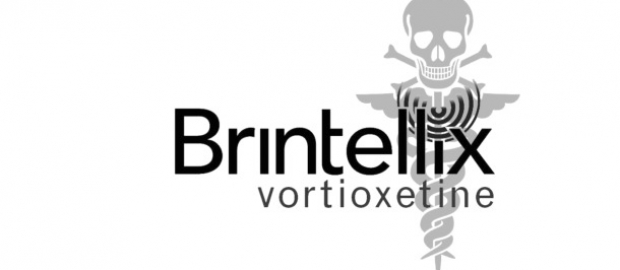


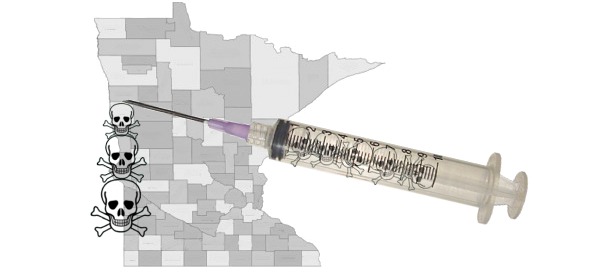

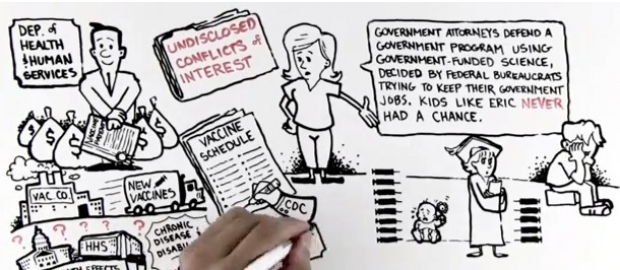
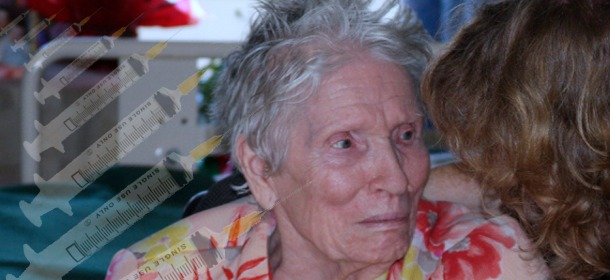



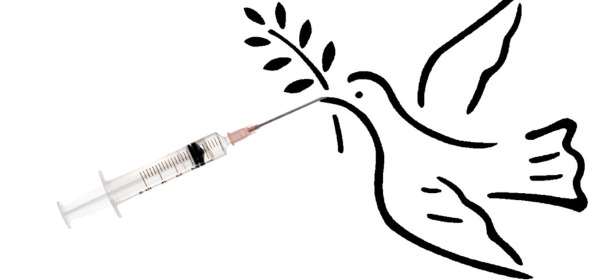
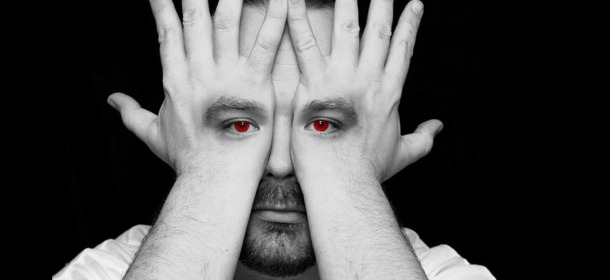

Pingback: Big Pharma’s Gaming of Medical Studies: Twisted Statistics and How to Spot Them | Gaia Health
Pingback: Back & Knee Pain Sufferers: Beware a New Class of Drugs | Gaia Health